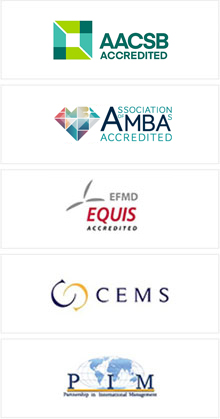IDBM collaboration bears fruit with prototype pupilometer
22.05.2014
Students from the IDBM degree programme were involved in developing a new kind of medical apparatus due to hit the US market within a year.
Assignment: Plan a medical device capable of gathering information from the pupil, analysing it, and sending the information to medical staff via a smartphone. – Check!
A multidisciplinary group of students from Finland and the US eagerly took up the challenge laid down by the Sheikh Zayed Institute, part of the Children's Hospital in Washington.
Students from Aalto University's International Design Business Management Degree Programme (IDBM) worked alongside peers from the American University's Kogod School of Business MBA programme for six months. The work was commissioned by the Children's Hospital in Washington.
A working group developed the prototype gauge intended to assist diagnostic work with the pupil such as measuring the amount of a medicine or drug in the blood or identifying mild concussion. The device uses smartphone technology to send the results of the readings to doctors. It looks like a children's kaleidoscope attached to a phone.
Multidisciplinary and express collaboration
The project was instigated last September and the stakeholders met in Helsinki in October and in Washington in February. In addition to these meetings, the group kept in contact via weekly Skype calls and with the help of a blog.
Documentation played an important role in the work, with the planning advancing at speed thanks to the ability for all the parties involved to constantly keep up to date. However, even though all the project participants enjoyed using online communication methods, they still stressed the importance of face-to-face meetings.
The IDBM students brought a valuable user-centric perspective to the project. They were responsible for the look of the device as well as the design of the graphical interface to be used with the device's Android operating system.
The project received exceptional praise from the Children's Hospital representatives. As well as developing the device itself, the students also worked on marketing and a business plan for it.
There is thought to be a genuine demand for the device. The pupilometer is primarily intended to be a screening tool for doctors; assisting them in determining the patient's further care needs. But thanks to its user-friendliness there is also a belief that the device can be used in less technically demanding settings such as in primary care.
Four IDBM students from Aalto University were involved in the project; representing the fields of design, engineering, and business: Alexander Rodichev, Ilari Laitinen, Hanna Poranen ja Sooa Hwang. The programme supervisors were Professor Mark Clark from the American University and Lecturer Daniel Graff from Aalto University. The Children's Hospital was represented by Julia Finkel, M.D., and the technical aspects of the project were the responsibility of Carolyn Cochenour.
The Kogod MBA students are continuing the productisation of the device and are creating a business plan for it. It is hoped that the device will be commercially available within a year.
The study project will be presented at the IDBM degree programme's spring review at Korjaamo Cultural Factory (Töölönkatu 51, Helsinki) on Friday 23 May, 2 to 6 pm. The review will showcase the business collaboration projects of all the 2013–2014 graduating IDBM students. The event is open to everyone.
More on the project (american.edu)



